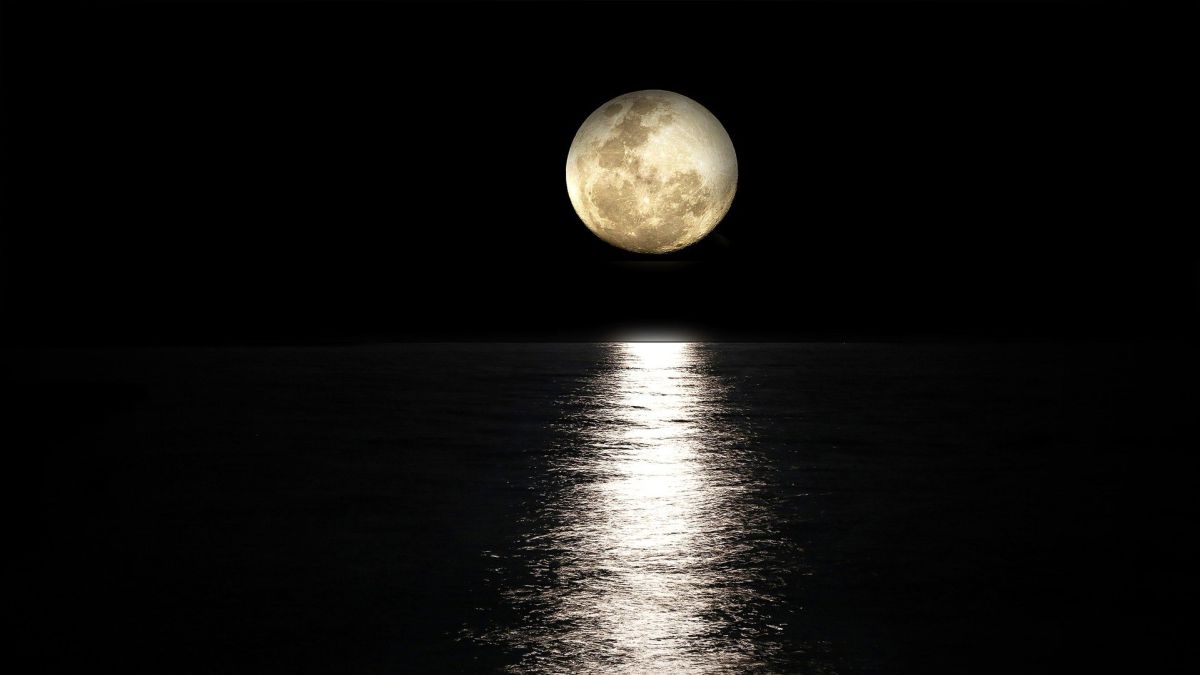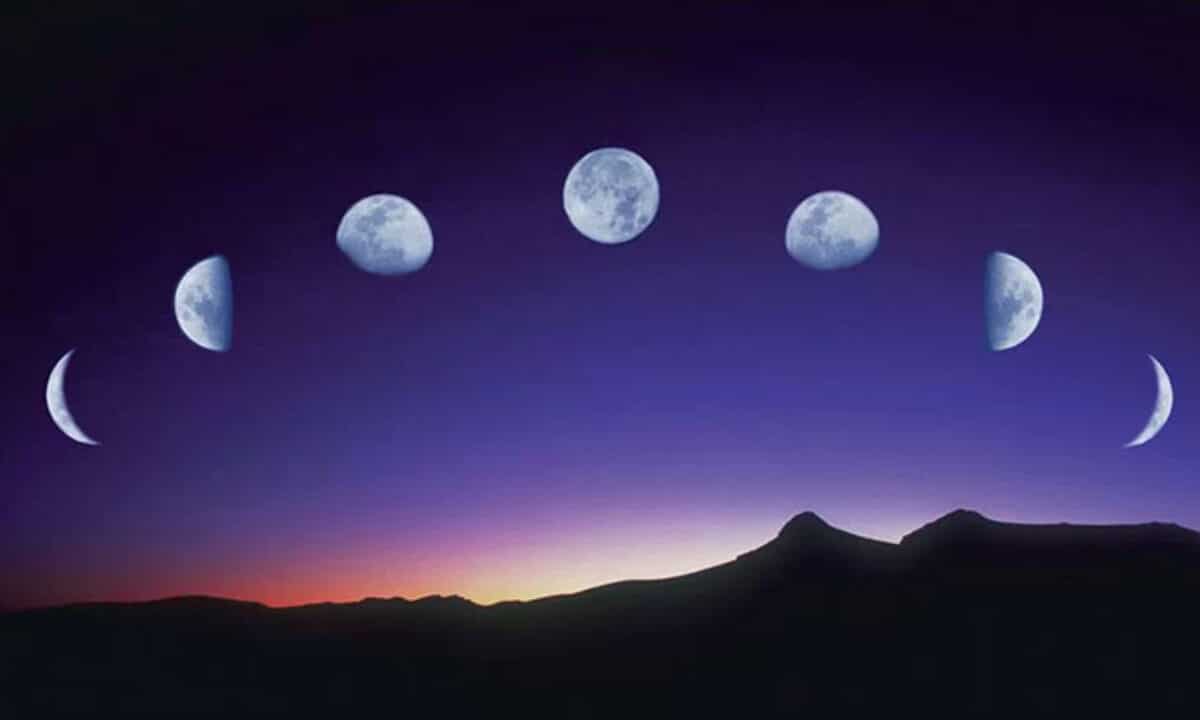
The Moon is a satellite, so it orbits the Earth at an average distance of 384.400 km, although the actual distance varies throughout its orbit. The rotating movements of the moon mean that we cannot see the hidden face. And it is that many people wonder what are the rotating movements of the moon and what is the reason why its hidden face cannot be seen even though it is rotating with the Earth.
For this reason, we are going to dedicate this article to tell you about the rotating movements of the moon, its characteristics and the importance it has.
Key features

The moon is the only natural satellite that orbits the earth, some 385.000 kilometers away from the earth. It is the fifth largest moon in the solar system. It takes 28 Earth days to orbit the planet. (translational motion) and rotate once (rotational motion), so the lunar surface always looks the same from Earth.
In 1609, the Italian Galileo Galilei built the first sixty-power telescope, which he used to discover mountains and craters on the Moon. In addition, he observed that the Milky Way is made up of stars and detected the four largest moons of Jupiter.
The 20 of July of 1969, American astronaut Neil Alden Armstrong became the first person to walk on the moon. So far, a dozen people have stepped on the lunar surface in various expeditions. In November 2009, the discovery of water on the Moon was officially announced after a NASA operation.
Origin and formation of the Moon

There are various scientific theories that explain the possible origin of the Moon. The most recent theory is called the "Big Impact Theory" and postulates that it was formed 4,5 million years ago as a result of a massive collision between Earth and Mars (when the protoplanet was in its formation phase).
The separated fragments of the shock formed a body in which its magma melted until it crystallized and formed the lunar crust. The star maintains an orbit around the Earth, serving as Earth's natural satellite.
Other theories formulated in previous years are:
- binary creation: the Moon and the Earth had parallel origins and that the moons were the result of the fusion of small particles over thousands of years.
- of the catch: It is believed that the moon was originally an independent planet, and due to its orbit and the effect of Earth's gravity, it still acts as a satellite trapped in Earth's orbit.
- From the fission: means that the moon broke away from the earth during the formation of the earth and gradually solidified into a natural satellite. This theory was ruled out due to differences in the composition of the two objects.
Rotational movements of the Moon

During the Moon's orbit around the Earth, the distance between two celestial bodies can vary greatly. At its greatest distance from Earth, the apparent diameter of the Moon is approximately 9/10 of the diameter that it presents to us at its shortest distance. The perigee and apogee are also not fixed. Therefore, calculating the movement of the Moon is difficult. Also, the distractions caused by the attraction play a role.
The gravitational pull of the sun, the equatorial bulge of the earth and the planets.
The rotation of the Moon around the Earth represents an ellipse with the Earth at one of its foci. The Moon's orbit is inclined approximately 5º 9′ with respect to the ecliptic. The intersection of the two planes forms a line that cuts the Moon's orbit at two points called the ascending and descending nodes. A line connecting two nodes is called a node line.
Relative to a fixed reference frame (such as a sidereal reference frame), the Moon orbits the Earth in 27,3 days. For a moving system like the Earth, the period of revolution is 29,5 days, which corresponds to the interval between two equal phases. The period of the Moon's revolution around the Earth, or lunar month (mean solar time), can be seen in different ways:
- sidereal month: The time elapsed between two consecutive passages of the Moon through the circle of sidereal time. Its duration is 27 days, 7 hours, 43 minutes and 11,6 seconds, or about 27,3 days. I remember the hour circle as the great circle of the celestial sphere that passes through the celestial bodies and the celestial poles. It is perpendicular to the celestial equator.
- Synodic month: The time elapsed between two equal moon phases. Its duration is 29 days, 12 hours, 44 minutes and 2,9 seconds, or about 29,5 days. Also known as the lunar calendar.
- tropical month: It is the time elapsed between the two consecutive passages of the Moon through the circle of points of Aries. Its duration was 27 days, 7 hours, 43 minutes and 4,7 seconds.
- Anomalistic month: It is the time elapsed between two consecutive passes of the Moon in perigee, with a duration of 27 days, 13 hours, 18 minutes and 33,2 seconds.
- Draconic month: It is the time elapsed between two successive transits of the Moon's orbital ascending node. It lasted 27 days, 5 hours, 5 minutes and 35,8 seconds.
These are all types of lunar months. As for the rotation movement, it must be said that it is a synchronous movement with translation, that is, the time it takes for the moon to turn once is the same as the time it takes to go around the earth. This is due to Earth's gravitational pull, which has slowed the Moon's initial rotation rate over time. Therefore, we always see the same face of the moon.
There is another movement called lunar liberation. The Moon always has the same face as the Earth. According to this, 50% of the Moon's surface is always visible from Earth, but due to these vibrations this is not true. These are apparent wobbles of your sphere, created by changes in the Earth's position. With them we can see up to 59% of its surface.
I hope that with this information you can learn more about the rotational movements of the moon and its characteristics.